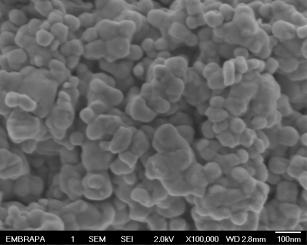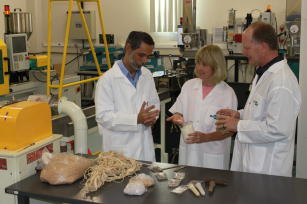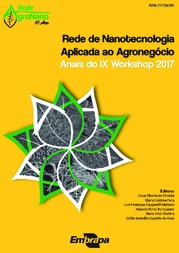Research evaluates how people perceive nanotechnology
Research evaluates how people perceive nanotechnology
Small, technology, future, science, innovation, and unfamiliarity. These are the first words that come to mind when people think about nanotechnology. This was the result of a survey involving 510 people in the Brazilian municipalities of Seropédica and Rio de Janeiro (Rio de Janeiro state) to evaluate the consumer's perception of this area of knowledge and its applications.
The main applications of the area mentioned by the respondents were: medicine, food, health and informatics, in this sequence. The intention to purchase nanotechnology products was also investigated, with cosmetics being the most mentioned.
These findings may support the productive sector to use technology as a differential, especially for the launch of nanotechnology products, as this information provides a competitive advantage, favoring consumer acceptance, according to the survey.
Unfamiliarity
When it comes to food, the most common association of respondents was with fruits, meats and vegetables. Despite the high intention to buy food derived from nanotechnological processes (nanofoods), a large part of the consumers were in doubt about it, which can significantly affect the decision to purchase these products.
"There is still a certain reluctance to buy food produced by nanotechnology due mainly to the increased perception of risks associated with new technologies and a certain degree of neophobia [aversion to novelties] in relation to food technology, especially on the part of women , elderly people and people with low levels of education," reports Raphaela Gonçalves, who developed the research in her master's degree program by the Graduate Program in Food Science and Technology of the Federal Rural University of Rio de Janeiro (UFRRJ), advised by the researcher Rosires Deliza, who works at Embrapa Food Technology.
Neophobia X NeophiliaFood neophobia is the unwillingness or even rejection of some consumers in trying new or unfamiliar foods. It is common behavior in childhood, but it can be perpetuated until adulthood. On the contrary, neophilia refers to the desire or attraction for novelties. |
The study carried out with consumers from Rio de Janeiro between 2017 and 2018 showed, however, a certain balance between the rejection and the enthusiasm of the participants in relation to nanotechnology, since 70% of those interviewed demonstrated a neutral attitude towards this issue, the other 15 % neophilic and 15% neophobic (read the table above).
“Consumers have proven themselves to be curious and interested in nanotechnology. For this reason, it is important to inform them in advance about the benefits and possible risks to inhibit any fear and bad impression and, mainly, any rejection of the new product launched in the market", says the Embrapa researcher. The results of the research also indicate that campaigns that incorporate improvement, convenience, naturalness, taste and consumer benefits can have a positive impact on individuals and their food choices, including innovative products, particularly when the message is concise and reliable, according to the researcher.
Especially for direct appeal products such as food and cosmetics, there is usually a certain dichotomy between the perceived benefit versus the risk to the consumer. "An overvalued perception can lead the public to create unrealistic expectations about the technologies, which lead to frustration. At the other extreme, there are opinion groups who believe in a 'nano apocalypse' as if new technologies could include unimaginable risks or unanticipated threats. In a way, this perspective is common to all new technologies," says Cauê Ribeiro, researcher at Embrapa Instrumentation and leader of the Research Network of Nanotechnology Applied to Agribusiness (AgroNano). "Our concern with consumer perception is to build a realistic expectation of what technology can offer and what precautions should be taken," the scientist says.
Word Association
The study used the word association methodology. The 510 study participants mentioned 1,858 different terms for nanotechnology, which were grouped into 18 dimensions and 14 categories. "This suggests that there are many interrelated factors that can affect consumer’s behavior in relation to nanotechnology", says Raphaela Gonçalves.
The quantitative study was then developed based on the results of the word association, in which the most cited words were the basis for the formulation of 25 statements evaluated by 403 individuals in a quantitative online survey, using seven-point scales, ranging from one (totally disagree) to seven (totally agree).
"Most consumers interviewed made coherent associations, in which most of the words cited described real and positive characteristics about nanotechnology, such as small, technology, future, science, innovation and unfamiliarity. Regarding gender, men associated the term with technology, while women, with food and aesthetics," says Deliza.
What is nanotechnology, after all?Nanotechnology is considered by many authors as the basis for the next industrial revolution. Nanoscale manipulation (1 nanometer is 1 millimeter divided by 1 million) can modify properties, such as color, conductivity, reactivity and melting point, creating new applications for materials in different sectors. In Brazil, from 2007, nanotechnology was identified as a strategic area for the Brazilian government because of its potential for innovation, market growth and benefits associated with its use. According to Embrapa researchers, public perception will be crucial to the achievement of these technological advances. The number of products based on nanomaterials is increasing, both in development or already commercialized, such as electronics, pharmaceuticals, textiles, and cosmetics. Nanotechnology is also increasingly present in the food sector and closer to the consumer. The smartphone is one of the most successful examples of the application of nanotechnology; it has numerous nanoscale components in its assembly. |
AgroNano Network
For over 10 years, Embrapa has maintained the AgroNano Network with the objective of building the basis for scientific knowledge and incorporation of nanotechnologies into Embrapa's activities, bringing together highly competent partners. Nowadays, the AgroNano Network has more than 150 researchers from the five Brazilian regions in the areas of physics, chemistry, biochemistry, biology, agronomy, zootechnics and engineering.
These specialists work in 17 Embrapa Units and 40 universities. The group allowed the Network to incorporate new horizons, such as the evaluation of the impacts of nanotechnologies applied to agribusiness and the systematic incorporation of technology transfer strategies for the area.
The integrated research resulted in about 600 articles published in international journals, in products such as food quality sensors, fruit coating films and smart packaging. Among the products for the private sector, fertilizer formulations, egg coating technology and edible thin plastic wraps have already been transferred.
"The prospect of applying nanotechnology to agriculture has been positive, as companies in various related sectors such as food, fertilizers, agrochemicals and pharmaceuticals have effectively started investing in nanotechnology research. The challenge is to continue investing here in Brazil, especially in the training of researchers and the acquisition of cutting-edge equipment, "says Cauê Ribeiro, researcher at Embrapa Instrumentation and leader of the AgroNano Network.
Aline Bastos (MTb 31.779/RJ)
Embrapa Agroindústria de Alimentos
Press inquiries
agroindustria-de-alimentos.imprensa@embrapa.br
Phone number: (21) 3988-9739
Further information on the topic
Citizen Attention Service (SAC)
www.embrapa.br/contact-us/sac/




